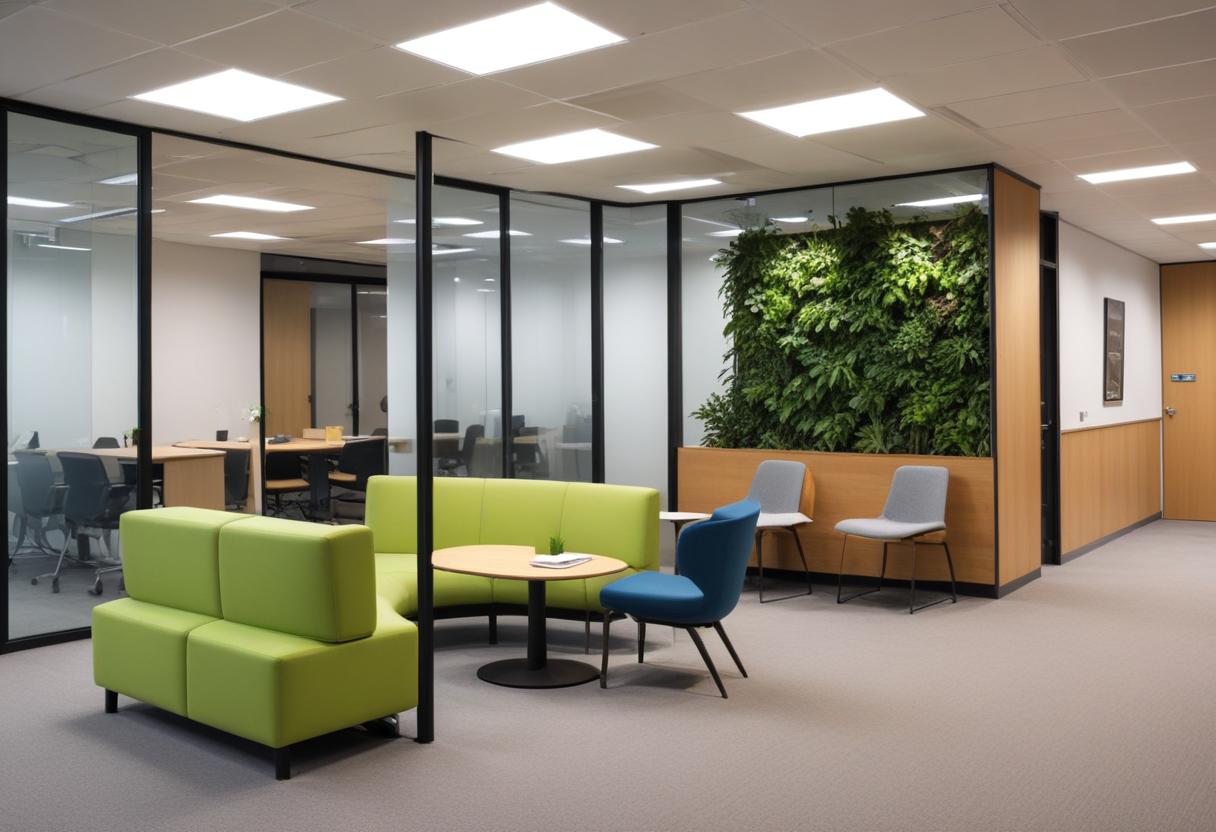Sustainability has now emerged to be the new buzzword in today’s business landscape. With the growing number of environmentally aware consumers, organisations have been trying to uphold their environmental principles through sustainable fit-outs, making it a critical component of their corporate responsibility and strategic planning. Fit-out solutions, which involve the process of making interior spaces suitable for occupation, play a significant role in achieving these sustainability goals. In this article, we explore how companies are adopting sustainable fit-out solutions to create greener, healthier, and more efficient work environments.
Understanding Sustainable Fit-out Solutions
A sustainable office fit-out means the process of redesigning or refurbishing office spaces using environmentally friendly materials and practices. These actions aim to reduce waste, promote energy efficiency and resource conservation, plus reduce the carbon footprint while promoting employee well-being and productivity.
Adding sustainability into office design gives you a range of benefits. Not only does it showcase your organisation’s commitment to the environment, but it can also lead to cost savings, improved employee morale, and enhanced brand reputation. An eco-conscious office reflects a forward-thinking approach that aligns with the growing demand for environmentally responsible practices.
Using Eco-friendly Materials and Natural Elements in Design
This is one of the fundamental and obvious aspects of any sustainable fit-out solution you seek. Using low-VOC (Volatile Organic Compound) paints and finishes release fewer harmful chemicals, thus improving indoor air quality and reducing health risks for your staff. You can also use recycled and reclaimed materials like wood and aluminium so that they reduce the demand for new raw materials and help in waste reduction.
Adding natural elements to your office interior design is another effective strategy for promoting sustainability. Natural stones like granite, slate, and sandstone are durable and aesthetically pleasing options for flooring, wall cladding, and decorative items. These materials have a lower environmental impact compared to synthetic alternatives. Furthermore, integrating indoor plants and living walls can improve air quality, reduce noise levels, and create a more pleasant and productive work environment.
Sourcing from Local Suppliers
While you are wondering about eco-friendly materials for your workspace, think about where you buy them too. You may find recycled furniture from a renowned brand overseas. But think about the environmental impact of shipping these goods. Instead, it’s best to source your supplies from local companies that can reduce your cost, time and also the resources involved in transporting. Overall, this will have multiple benefits for your business: improving sustainability, reducing shipping costs, and helping you support the local economy.
Integrating Energy-Efficient Systems
Modern lighting technologies, such as LED lights and circadian lighting systems, offer substantial energy savings and improved lighting quality. LED lights consume significantly less energy than traditional incandescent bulbs and have a longer lifespan, reducing maintenance costs and environmental impact. Circadian lighting, on the other hand, mimics natural daylight patterns and helps regulate the body’s circadian rhythms, improving mood, productivity, and overall well-being. Additionally, as we often say, designing workspaces to maximise natural light through open layouts, larger windows, and skylights can further reduce the reliance on artificial lighting.
Optimising HVAC (Heating, Ventilation, and Air Conditioning) systems is also another strategy you can employ to reduce energy consumption in commercial buildings. Implementing energy-efficient HVAC designs, including the use of motion sensors and programmable thermostats, ensures that heating and cooling systems operate only when needed, thus conserving energy.
Steps Taken for Waste Reduction and Recycling
Reducing waste during fit-out projects is essential for sustainable building practices. This can be achieved through careful planning, efficient use of materials, and comprehensive recycling programs. For instance, reusing existing furniture and fixtures or selecting products made from recyclable materials can significantly reduce waste. Companies that implement robust recycling programs can divert substantial amounts of waste from landfills, contributing to a circular economy and reducing their environmental footprint. Ask your fit-out company about this.
Finding Means to Improve Indoor Air Quality
Indoor air quality in your office has a direct impact on the health and productivity of your workforce. Sustainable fit-out solutions prioritise the use of non-toxic, low-VOC materials to reduce indoor pollutants. Proper ventilation is also critical for maintaining healthy indoor environments. Designing spaces with adequate airflow, incorporating operable windows, and using air purifiers can help remove contaminants and circulate fresh air in the building.
Earning Certifications and Standards Related to Sustainability
Achieving sustainability certifications, such as LEED (Leadership in Energy and Environmental Design), BREEAM (Building Research Establishment Environmental Assessment Method), FSC (Forest Stewardship Council), and PEFC (Programme for the Endorsement of Forest Certification), is a testament to a company’s commitment to green building practices. These certifications provide a framework for evaluating and improving the environmental performance of buildings, covering aspects such as energy efficiency, water usage, material selection, and indoor environmental quality in NZ. Companies that obtain these certifications can gain a competitive advantage, attract environmentally conscious clients, and contribute to global sustainability goals.
Ready to Go Green?
Sustainable fit-out solutions are integral to creating greener, healthier, and more efficient workplaces. By adopting eco-friendly materials, sourcing from locals, optimising energy use, reducing waste, and improving indoor air quality, companies can significantly reduce their environmental impact and promote sustainability. Achieving recognised certifications further demonstrates a commitment to green practices and positions businesses as leaders in sustainability. As the demand for sustainable solutions continues to grow, companies that embrace these practices will not only benefit the environment but also enhance their reputation and long-term success.


